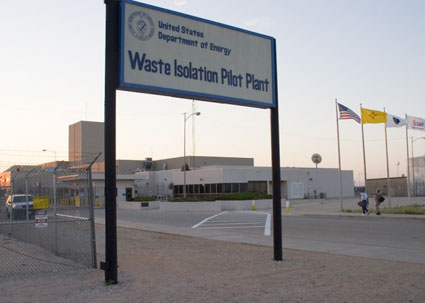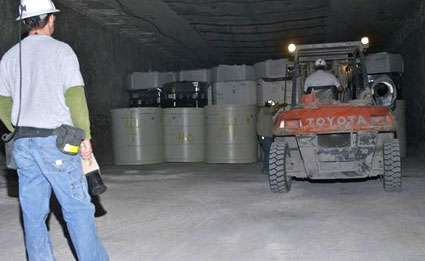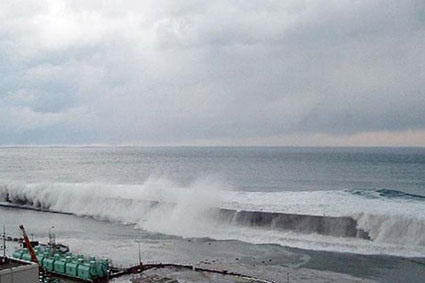
A new report by the United Kingdom's Council for Science and Technology (CST) on genetically modified crops, commissioned by Prime Minister David Cameron, calls for more field trials in the United Kingdom -- while the British public continues to be uninterested in eating GM food.
The CST is also calling for what it calls "public good" GM varieties (PubGM) to be grown and tested in the U.K., using publicly funded field trials. "Public good" traits could include nutritional enhancements such as added vitamins, or "climate-proofing" properties such as drought or heat resistance. "With PubGM, seed companies, consumers and regulators will be able to decide, based on results of experiments, whether a GM trait has proved its worth in U.K. crops under U.K. conditions," said Professor Jonathan Jones from The Sainsbury Laboratory, one of the report's authors. The report was welcomed by the Agricultural Biotechnology Council, which represents companies including BASF, Monsanto and Syngenta. Yet at least one analyst said U.K. consumer demand for GM foods is simply not there. "While Britain's leading plant scientists appeal to the prime minister to help foster this new technology, its leading supermarket chains avoid stocking GM products because no one is asking for them," said David Shukman, science editor, BBC News. GeneWatch UK, a not-for-profit policy research and public interest group, concurs, saying on its website: "GM crops enter the U.K. mainly as animal feed. There is no commercial growing, but there have been experimental trials of GM potatoes and wheat in recent years. In 2014, a trial of GM Camila sativa ('false flax') is planned, which has a genetically altered oil content (high in omega-3). Most British retailers do not sell GM foods and if they stock them they must be labelled (this is also the case elsewhere in Europe)." All is not well at the Waste Isolation Pilot Plant (WIPP) near Carlsbad, New Mexico. Radiation levels have just doubled at the first, and so far only, deep geological repository for nuclear waste in the United States, which remains closed down since February.
For nearly 15 years, the Carlsbad waste dump has received and stored radioactive waste in a deep salt deposit more than a thousand feet below the plant. Those operations have apparently been without incident until last month. On Feb. 5, the underground part of the repository was evacuated because a truck purportedly caught fire in the salt mine. Less than 10 days later, aboveground employees were exposed to actual particles of highly toxic radioactive material that had somehow wafted up from deep below. Actual particles are not the same as exposure to the gamma radiation received from a medical x-ray or by flying in an airliner. Ingesting or inhaling actual particles of radioactive material causes injury for which there is no cure. Planet Waves first reported about the February incidents at WIPP on March 1. Since then, the actions of the U.S. Department of Energy (DOE) have belied their words. DOE statements consistently downplay danger to the public. Yet, punitive actions made against the private contractor in charge of the nuclear waste site, as well as failure to resume plant operations, send a very different message.
Admitted new (and anticipated future) releases of Plutonium and Americium were atrributed to residual or previous deposits left in the plant's exhaust duct work during the Feb. 14 radiation release event. Unsurprisingly, but incredibly, recent and further releases of highly toxic particles have been characterized as low level and well within safe limits. In the meantime, all over the U.S. (and the world), radioactive byproducts of electrical power generation, weapons production and other forms of nuclear technology have nowhere to go beyond sites inappropriate for long-term storage. As a practical matter, the world's growing stockpiles of radioactive waste will remain dangerous forever -- a tremendous problem few seem willing to face. Beneath these few facts that we have, and deep beneath Carlsbad, N.M., lie further truths that are, so far, unavailable to the public at risk. Tons of Water, Not a Drop to Drink Water is still a big problem at Japan's crippled Fukushima Daiichi nuclear facility. It's been three years since an earthquake, followed by a wall of seawater inundating the facility site, triggered an unprecedented nuclear disaster in March 2011. The tsunami is long gone, but 1,200 tanks of water contaminated by radioactive toxins have become a disaster in their own right. As Planet Waves has reported previously, at least 300 metric tons of water, contaminated with radiation as it passes beneath the damaged and melted-down reactors, continues to flow into the ocean each day, polluting the Pacific with many radioactive isotopes that will outlive a human lifespan.
"The one issue that keeps me awake at night is TEPCO's long-term strategy for water management," said Klein. "Storing massive amounts of water on-site is not sustainable. A controlled release is much safer than keeping the water on-site." A series of spills and leaks from the poorly constructed water storage containers blanketing an area surrounding the site continues to exacerbate the problem. While TEPCO and other nuclear regulators reassure the public that the water will be filtered before its release, the filtration process still fails to remove tritium, a radioactive isotope linked to cancer. Vehement opposition from local fisherman and other members of the public has delayed the release of the stored, contaminated water. But space is limited for the construction of new storage tanks and TEPCO fears that it will run out sometime next year. There seems to be no way for TEPCO to keep up with the ongoing flow of water from the surrounding hills, and equally, no end in sight for the continuous pollution of the Pacific Ocean. Fukushima Residents to Return Home Despite ongoing contamination threatening the area, Japan is encouraging some of those evacuated after the Fukushima nuclear disaster three years ago to return home. On April 1, the government will begin the process of moving 350 citizens back into their vacated towns in the exclusion zone, which covers a 12-mile radius surrounding the devastated power plant.
According to the Japanese government, more residents are soon to follow -- some 30,000 people are expected to return within the next two years. This doesn't exactly come as a huge surprise, given Japan's Prime Minster Shinzo Abe's pro-nuclear stance. His administration aims to resume operations of nuclear power plants throughout the country, which have been shut down since the nuclear meltdown. Part of that plan involves damage control and improving public relations at Fukushima. Residents from the Tamura area, 12 miles west of Fukushima Daiichi, were told at a district meeting last Sunday that radiation contamination levels were within a safe range, and the decision had been made to lift the evacuation advisory. The government also plans to lend out dosimeters to help people monitor their exposure to radioactivity. Writing and Editing Credits: Planet Waves is produced by a team consisting of Hillary Conary, Eric Francis, Elizabeth Michaud, Amanda Painter, Susan Starr, Carol van Strum and Chad Woodward. Coordinating Editor: Elizabeth Michaud. Page assembled and coded by Anatoly Ryzhenko. Special thanks to the Fact Checkers List, which goes over each edition on Thursday night -- and to our main astrology fact-checker Alex Miller, and Amanda, who goes over all their suggestions. Our editions are also proofread and fact-checked by Jessica Keet. To unsubscribe, click here e Wiki | Friends | Editors | Contact Us Copyright © 2013 by Planet Waves, Inc. All Rights Reserved. Other copyrights may apply. Some images used under Fair Use or Share Alike attribution. |




